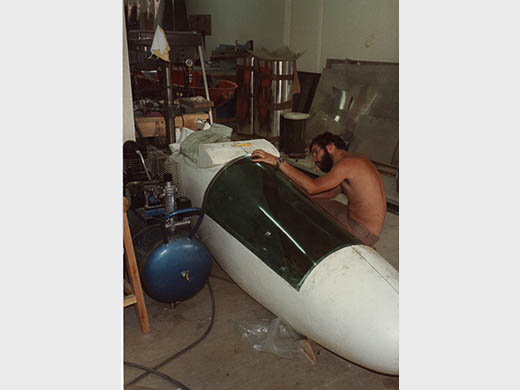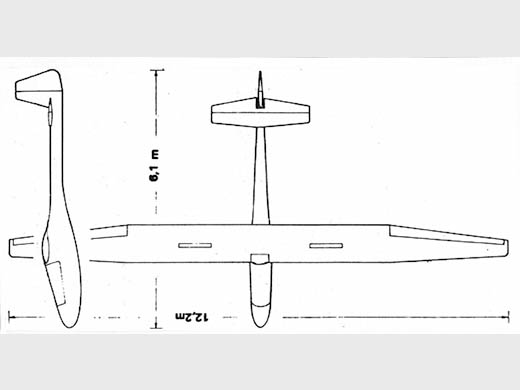
Pikros Pi-12
Autre nom (ou nom en langue originelle) : Πικρός Π-12| DONNÉES GÉNÉRALES |
| Année du premier vol (ou de design, si seul projet) |
1984 |
| Pays | Grèce |
| Designer(s) | PIKROS, Costantine |
| Premier constructeur | Projet non abouti |
| Type d'appareil | Planeur |
| Fonction | Expérimental |
| SPÉCIFICATIONS TECHNIQUES |
| Envergure | 12.2 m |
| Longueur | -- |
| Hauteur | -- |
| Allongement | -- |
| Surface alaire | 9.5 m2 |
| Profil aile | Wortmann FX 61-184 |
| Masse à vide | 160 kg |
| Masse maxi | 260 kg |
| Charge alaire | 25 kg/m2 |
| Vitesse mini | -- |
| Vitesse maxi | -- |
| Finesse maxi | 20 à 85 km/h |
| Taux de chute mini | 0.85 m/s à 75 km/h |
| Nb sièges | 1 |
| Structure | Fuselage fibre de verre et résine. Structure des ailes aluminium. |
AUTRES INFORMATIONS
| Constructeur(s) |
| ||||||
| Infos techniques | -- | ||||||
| Histoire résumée | In 1976 we started thinking of a low performance sailplane for soloing around the airport. As low performance was considered an L/D of around 20 and a minimum sink of around 0,8 m/s. The first preliminary drawings was the π10, a 10m span light sailplane using the high lift airfoil FX63-137. As the existing data for the airfoil were only for low Re number, professor Wortmann himself was asked on the matter. His answer was strait: "Do not use FX63-137, this is suitable only for wingtips". After these divine words, the wing profile was changed to the conventional FX61-184 and the span had to grow to 12m. So was born the π12. Fiberglass was chosen as the building material. The plug for the fuselage was built with much enthusiasm and with much amateur work mostly by C.Pikros himself. Then work came to a stop. The member of the π12 team on whom the fiberglass work depended started looking at the project with less amateur attitude. In 1980 the π12 team was joined by aeronautical engineer T.Spathopoulos and the project was adopted by the ship owner P.Laskaridis. At this stage a new conservative decision was made. As nobody in the team had experience in dealing with vacuum bags, the fiberglass wings were abandoned in favor of a conventional aluminum wing. A couple of experienced metal workers started building first the jigs then the three pieces wing. At the same time the fuselage mold was built and at last the fuselage shell was laid up. Building the aluminum wing. Here is the center section. Around the end of 1984 the wings were almost ready. All the metal fittings of the fuselage were built. The pilot's seat and the instrument panel too. The total weight of the sailplane was about 130 kg. On the other hand there were also some failures. The stabilator was built by a young engineer of the team, using an aluminum spar and polystyrene foam covered with fiberglass and a lot of filler to smooth its surface. It was extra heavy. Bending the canopy' s acrylic sheet in a bath of heated oil was also complete failure. These were independent pieces that could be easily rebuilt. But the project had already used a lot of money (e.g. many years of rent for the workshop). At the same time the people involved had acquired careers with few time to spare. The π12 project was abandoned for good. It has been a very instructive experience for the whole team. [Texte Costas Pikros] | ||||||
| Liens personnalités | Pas de personnalité associée. |
SOURCES DOCUMENTAIRES
| Liens WEB | Site : Hellenic Soaring Archive . Building gliders in Greece. Histoire + photos + specs. (2015-04-04 CL) |
| Livres | Gliders made in Greece par PIKROS, Constantine (2016) [p. 16-18. Texte + 6 photos + plan 3 vues]. |

Team J2mcL © 2003 -
- Pages optimisées pour Mozilla Firefox

